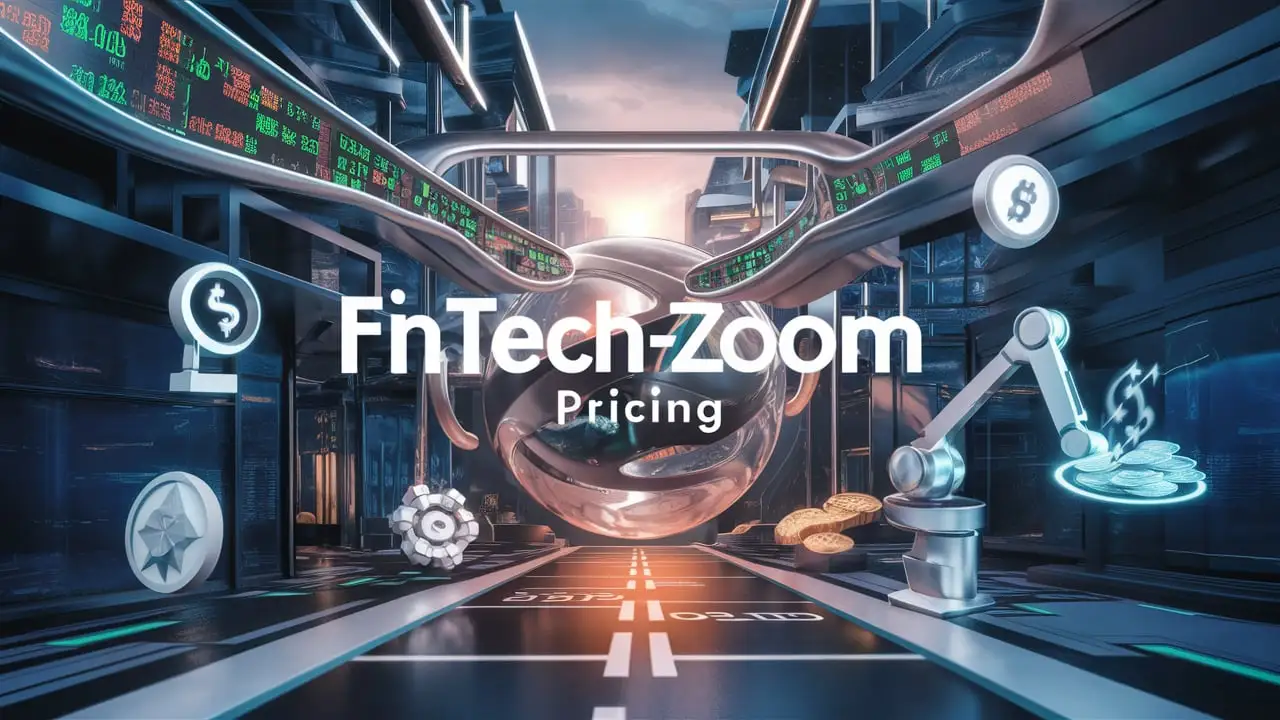The fintech sector is evolving rapidly, offering a range of innovative solutions to meet diverse financial needs. Understanding fintech pricing is crucial for businesses and individuals who want to make informed decisions and optimize their investments. This guide will help you navigate the complex world of fintech costs by covering:
- Different fintech pricing models and how they work
- Key factors influencing fintech pricing decisions
- Strategies for evaluating and comparing fintech costs
By delving into these aspects, you’ll gain insights that will enable you to select the best fintech solutions for your needs, whether you’re managing a small business or seeking personal financial tools.
The Basics of Fintech Pricing
Fintech pricing can vary widely depending on the solution and its features. To make sense of these costs, it’s important to understand the different fintech pricing models and the factors that influence them. Here’s a breakdown of the basics:
- Subscription-Based Pricing: This model involves paying a fixed fee on a regular basis—monthly or annually. It often includes tiered plans, where the cost increases with the level of features or services. This model is common among fintech solutions offering ongoing services or access to premium features.
- Usage-Based Pricing: Here, costs are determined by how much you use the service. This can include per-transaction fees or charges based on the volume of data processed. This model is flexible and can be cost-effective for businesses with varying usage patterns.
- Freemium Model: Some fintech solutions offer basic features for free while charging for advanced functionalities. This model allows users to try out the service before committing to a paid plan. However, it’s important to understand the limitations of the free version and the cost of upgrading.
- Transactional Pricing: This involves paying a fee each time a transaction is processed. It’s often used in payment processing and trading platforms. While it can be straightforward, be aware of how transaction volumes can impact overall costs.
Factors influencing fintech pricing include the complexity of the service, the level of customization required, and the support and maintenance provided. Understanding these models and factors will help you make better decisions when choosing a fintech solution.
Key Components of Fintech Pricing
When evaluating fintech pricing, it’s essential to understand the various components that contribute to the overall cost. These components can significantly affect your budget and should be carefully considered:
- Subscription Costs:
- Monthly vs. Annual Subscriptions: Many fintech solutions offer both monthly and annual subscription plans. Monthly plans may have a higher per-month cost, but they provide flexibility. Annual plans often come with discounts and can be more economical in the long run.
- Tiered Pricing Plans: Fintech services frequently offer multiple pricing tiers, each providing different levels of features and support. Lower tiers might include basic functionalities, while higher tiers offer advanced features and priority support.
- Usage-Based Costs:
- Per-Transaction Fees: Some fintech services charge fees for each transaction processed. This model is common in payment gateways and trading platforms. It’s essential to estimate your transaction volume to understand how this cost can add up.
- Variable Usage Charges: Other services might charge based on usage metrics such as data storage or processing power. This model can be beneficial if your usage fluctuates but may become costly if your needs increase significantly.
- Setup and Implementation Fees:
- One-Time Setup Fees: These are initial charges for configuring and integrating the fintech solution with your existing systems. While they are typically a one-time cost, they can be substantial depending on the complexity of the setup.
- Customization and Integration Costs: Customizing the fintech solution to fit your specific needs may incur additional costs. Integration with other tools or systems can also add to the initial expense.
- Hidden Costs:
- Additional Features and Upgrades: Many fintech solutions offer additional features or upgrades for an extra fee. It’s crucial to understand what is included in your plan and what might incur additional charges.
- Support and Maintenance Fees: Ongoing support and maintenance can be additional costs beyond the standard subscription. Some providers include these in the plan, while others charge separately.
- Discounts and Promotions:
- Introductory Offers: Fintech companies often provide promotional pricing for new customers. These offers can reduce initial costs but be aware of how the pricing might change after the promotion ends.
- Volume Discounts: For businesses with high transaction volumes or multiple users, volume discounts might be available. Negotiating these discounts can result in significant savings.
Understanding these key components will help you better evaluate and compare fintech costs, ensuring that you select a solution that aligns with your budget and needs.
Comparing Fintech Pricing Models
When choosing a fintech solution, comparing different fintech pricing models can help you find the best fit for your needs. Each model has its advantages and disadvantages, and understanding these can guide you to the most cost-effective option. Here’s a closer look at the pros and cons of each model:
- Subscription-Based Pricing:
- Pros:
- Predictability: Fixed costs make it easier to budget and plan. You know exactly what you’ll pay each month or year.
- Access to Full Features: Typically, all features are included in the subscription, eliminating surprise costs.
- Support and Updates: Often includes regular updates and customer support as part of the package.
- Cons:
- Cost Over Time: While predictable, it can be more expensive over time, especially if you only use some of the features.
- Lack of Flexibility: May not be ideal for users with fluctuating needs or lower usage.
- Pros:
- Usage-Based Pricing:
- Pros:
- Flexibility: You pay based on actual usage, which can be cost-effective if your needs vary.
- Scalability: Ideal for businesses that experience fluctuating or unpredictable usage levels.
- Cons:
- Cost Uncertainty: Costs can be unpredictable and potentially high during peak usage periods.
- Complexity: Tracking and managing usage can be more complex than fixed subscription costs.
- Pros:
- Freemium Model:
- Pros:
- Low Entry Cost: Allows you to use the basic features for free, which can be beneficial for startups or small businesses.
- Try Before You Buy: You can evaluate the service before committing to a paid plan.
- Cons:
- Limited Features: Free versions often come with limitations, and essential features may only be available in the paid version.
- Upgrade Costs: Transitioning to a paid plan can be costly if you need additional features or higher usage limits.
- Pros:
- Transactional Pricing:
- Pros:
- Pay-as-You-Go: You only pay for what you use, which can be ideal for occasional or unpredictable transactions.
- Simple Pricing Structure: Easy to understand and manage, with costs directly tied to usage.
- Cons:
- High Costs for High Volume: Transaction fees can add up quickly if your transaction volume is high.
- Lack of Predictability: Costs can be difficult to predict and budget for.
- Pros:
Case Studies
To illustrate the impact of these pricing models, let’s look at a few real-world examples:
- Company A (Subscription-Based): A fintech company offering subscription-based services found that predictable monthly costs allowed them to budget effectively and provide consistent service quality. However, they noticed that businesses with fluctuating needs found this model less appealing due to the lack of flexibility.
- Company B (Usage-Based): A payment processing fintech with a usage-based pricing model saw a significant increase in adoption among small businesses with variable transaction volumes. While costs were variable, businesses appreciated the pay-as-you-go flexibility.
- Company C (Freemium): A budgeting app using a freemium model attracted many users with its free basic version. However, as users needed more advanced features, a substantial percentage upgraded to the paid version, which helped the company generate revenue while still offering value upfront.
Understanding these models and learning from these case studies will help you make a more informed decision when selecting a fintech solution. Evaluate how each model aligns with your needs and financial goals to choose the most appropriate option.
Factors to Consider When Choosing a Fintech Solution
Selecting the right fintech solution involves more than just comparing prices. It’s crucial to evaluate various factors to ensure the solution aligns with your needs and budget. Here are key factors to consider:
- Business Needs and Objectives:
- Aligning Pricing with Goals: Assess how the fintech solution fits your business or personal financial goals. For instance, if you need robust financial management tools, a subscription-based plan with comprehensive features might be suitable.
- Feature Requirements: Ensure the solution provides the necessary features and capabilities to meet your specific needs. Consider whether you need advanced analytics, integration with other tools, or specialized support.
- Budget Constraints:
- Cost vs. Benefits: Evaluate the total cost of the solution against the benefits it offers. Look at not just the upfront costs but also any recurring fees, setup charges, and potential additional costs for upgrades or extra features.
- Affordability: Ensure the pricing model you choose fits within your budget. For example, if your budget is tight, a freemium model might be a good starting point, with the option to upgrade as needed.
- Scalability and Flexibility:
- Future Growth: Choose a fintech solution that can scale with your business as it grows. Consider whether the solution can handle increased transaction volumes, additional users, or expanded features.
- Adaptability: The solution should offer flexibility to adjust pricing or features based on changing needs. A usage-based model might be ideal for fluctuating needs, while a subscription-based model offers stability.
- Value and ROI:
- Return on Investment: Assess the potential return on investment (ROI) from using the fintech solution. This involves evaluating how the solution will improve efficiency, reduce costs, or enhance revenue.
- Long-Term Value: Consider the long-term benefits and potential savings. For instance, a higher initial cost might be justified if the solution offers significant long-term value and cost savings.
- Customer Support and Service:
- Quality of Support: Ensure the fintech provider offers reliable customer support. Good support can be crucial for resolving issues quickly and maintaining smooth operations.
- Service Levels: Check if support and maintenance are included in the pricing plan or if they come with additional fees. The availability of support, such as 24/7 service or dedicated account managers, can impact your overall satisfaction.
Additional Tips
- Read Reviews and Testimonials: Look for feedback from other users to gauge the reliability and effectiveness of the fintech solution. Reviews can provide insights into potential issues and advantages.
- Request Demos and Trials: Take advantage of free trials or demos to evaluate the solution in real-world conditions. This hands-on experience can help you understand how well the solution meets your needs.
Considering these factors will help you make a well-informed decision when choosing a fintech solution. By aligning the solution with your needs, budget, and growth plans, you can ensure you select the most appropriate and cost-effective option.
Strategies for Evaluating Fintech Pricing
When it comes to choosing the right fintech solution, evaluating pricing is a critical step. Here are effective strategies to ensure you make an informed decision:
- Conduct a Cost-Benefit Analysis:
- Compare Features and Costs: Start by listing the features offered by different fintech solutions and compare them against their costs. Look at what each pricing model includes and how it aligns with your needs.
- Assess Value: Evaluate how the features and benefits justify the cost. For example, a higher-priced solution might offer advanced analytics or integration capabilities that provide significant value for your business.
- Request Demos and Trials:
- Experience the Solution Firsthand: Many fintech providers offer demos or free trials. Use these opportunities to explore the solution’s functionalities and assess its usability.
- Test Key Features: Focus on the features that are most important to you. For instance, if transaction processing speed is critical, test how well the solution performs in this area during the trial.
- Read Reviews and Testimonials:
- Gather Insights from Other Users: Look for reviews and testimonials from current or past users of the fintech solution. This can provide valuable insights into the solution’s performance, customer service, and any hidden costs.
- Evaluate Common Issues: Pay attention to any recurring issues or complaints. This can help you identify potential drawbacks and avoid solutions that might cause problems.
- Negotiate Terms:
- Seek Better Pricing: Don’t hesitate to negotiate the terms of the pricing plan. Many fintech providers are open to discussing discounts, especially for long-term commitments or higher usage volumes.
- Ask About Customization: Inquire if there are options for customizing the plan to better fit your needs. Some providers may offer tailored solutions or flexible pricing based on your specific requirements.
Additional Considerations
- Understand Contract Terms:
- Review the Fine Print: Carefully read the contract terms to understand all aspects of the pricing, including any additional fees or conditions. Ensure there are no hidden costs or surprises.
- Check for Cancellation Policies: Know the terms for canceling the service, including any penalties or notice periods required.
- Evaluate Customer Support:
- Assess Support Quality: Ensure that the provider offers reliable and responsive customer support. Good support can be crucial for addressing any issues that arise during your use of the solution.
- Determine Support Availability: Check the availability of support services, such as 24/7 assistance or dedicated account managers.
By applying these strategies, you’ll be better equipped to evaluate fintech pricing and select a solution that meets your needs and budget effectively. Thorough evaluation ensures that you invest in a solution that delivers the best value and performance for your financial technology requirements.
Trends and Future Outlook in Fintech Pricing
The fintech industry is continually evolving, and so are its pricing models. Staying informed about emerging trends and future developments can help you make strategic decisions. Here’s a look at some key trends and what to expect in the future:
- Emerging Pricing Models:
- Dynamic Pricing: Some fintech solutions are beginning to adopt dynamic pricing models, where costs adjust based on real-time factors such as usage levels or market conditions. This model offers flexibility and can align more closely with user needs but may introduce cost variability.
- Outcome-Based Pricing: This model ties costs to the results or outcomes delivered by the fintech solution. For instance, payment processors might charge based on the volume of successful transactions rather than a flat fee. This approach ensures that you only pay for the value received.
- Impact of Regulatory Changes:
- Increased Transparency: Regulatory changes are pushing for greater transparency in fintech pricing. New regulations may require providers to disclose all costs upfront and avoid hidden fees, leading to clearer and more straightforward pricing structures.
- Compliance Costs: Changes in financial regulations could impact pricing, with providers potentially passing on costs related to compliance and security measures. Staying updated on regulatory trends will help you anticipate and manage these potential cost increases.
- Predictions for the Future:
- Integration with Emerging Technologies: As technologies like artificial intelligence (AI) and blockchain become more prevalent, fintech solutions are likely to incorporate these innovations into their pricing models. This integration might lead to more sophisticated pricing options and new ways to manage and optimize costs.
- Personalized Pricing: Advances in data analytics could enable more personalized pricing strategies. Fintech providers may offer customized pricing plans based on individual usage patterns, preferences, and business needs, resulting in more tailored and cost-effective solutions.
- Focus on Cost Efficiency:
- Increased Competition: The growing number of fintech providers is leading to increased competition and pressure to offer more cost-effective solutions. This competition may drive down prices and introduce more flexible pricing options to attract and retain customers.
- Enhanced Value Propositions: Fintech companies are likely to focus on delivering greater value for money by bundling services, offering additional features at no extra cost, and improving overall service quality to justify their pricing.
Preparing for the Future
- Stay Informed: Keep up with industry news and trends to understand how emerging technologies and regulatory changes might affect fintech pricing. This knowledge will help you anticipate changes and make proactive adjustments to your fintech strategy.
- Be Flexible: Be open to adopting new pricing models or switching providers if better options become available. Flexibility can help you optimize costs and take advantage of new opportunities as the fintech landscape evolves.
Understanding these trends and future developments in fintech pricing will help you navigate the evolving market and make informed decisions about your financial technology investments. Staying ahead of these changes ensures that you continue to get the best value from your fintech solutions.
Conclusion
Navigating the world of fintech pricing can be complex, but understanding the various models and factors involved is key to making informed decisions. Here’s a recap of what you’ve learned and how to apply these insights:
- Understand Fintech Pricing Models: Familiarize yourself with different fintech pricing models such as subscription-based, usage-based, freemium, and transactional. Each model has its pros and cons, and the right choice depends on your specific needs and usage patterns.
- Evaluate Key Components: Consider the key components of fintech pricing, including subscription costs, usage-based charges, setup fees, hidden costs, and potential discounts. A thorough evaluation of these factors will help you avoid unexpected expenses and choose a solution that fits your budget.
- Apply Evaluation Strategies: Use strategies like conducting a cost-benefit analysis, requesting demos, reading reviews, and negotiating terms to make an informed decision. These steps will help you assess the value and performance of different fintech solutions effectively.
- Stay Updated on Trends: Keep an eye on emerging trends and future developments in fintech pricing. Understanding how new technologies, regulatory changes, and evolving pricing models might impact your costs will help you stay ahead of the curve.
By carefully considering these aspects, you can select a fintech solution that not only meets your needs but also provides good value for your investment. Whether you are a business owner, finance professional, or tech enthusiast, making informed decisions about fintech pricing will ensure that you achieve your financial goals efficiently and cost-effectively.
Feel free to explore the additional resources provided to further enhance your understanding of fintech pricing and make the most out of your financial technology investments.
Additional Resources
To deepen your understanding of fintech pricing and make well-informed decisions, here are some valuable resources:
- Industry Blogs and Publications:
- Finextra: Offers insights and news on fintech developments, including pricing trends and industry innovations.
- TechCrunch: Provides updates on the latest fintech startups and their pricing models.
- Forbes Fintech Section: Features articles on fintech market trends, case studies, and pricing strategies.
- Reports and Whitepapers:
- McKinsey & Company Fintech Reports: Detailed analyses on fintech market trends and pricing models.
- Gartner Research: Offers in-depth reports on fintech technologies and their cost implications.
- Accenture Fintech Research: Provides insights into fintech pricing strategies and future trends.
- Online Tools and Calculators:
- Fintech Pricing Calculators: Some fintech providers offer online tools to estimate costs based on your usage needs.
- Cost-Benefit Analysis Tools: Utilize these tools to compare the features and costs of different fintech solutions.
- Webinars and Workshops:
- Fintech Webinars: Look for webinars hosted by fintech experts on pricing strategies and market trends.
- Industry Conferences: Attend fintech conferences or virtual events to gain insights and network with industry professionals.
- Community Forums and Discussion Groups:
- Fintech Reddit: Engage with the fintech community to discuss pricing models and get recommendations.
- LinkedIn Groups: Join fintech-focused groups to share experiences and learn about different pricing strategies from peers.
- Books and Guides:
- “The Fintech Book” by Susanne Chishti and Janos Barberis: Offers a comprehensive overview of fintech innovations, including pricing strategies.
- “Fintech Revolution” by Zlatko Pinter: Provides insights into the evolving fintech landscape and its impact on pricing.
By exploring these resources, you can stay informed about the latest developments in fintech pricing and enhance your ability to make strategic decisions for your business or personal finances.

I’m Dariel Campbell, the guy who loves making your experience awesome at “San Antonio Vista.” Playing with stories and attractions is my thing. At San Antonio Vista, we’re here to make your visit stand out and shine. Let’s make your time in San Antonio unforgettable—come and join the fun at San Antonio Vista!
















